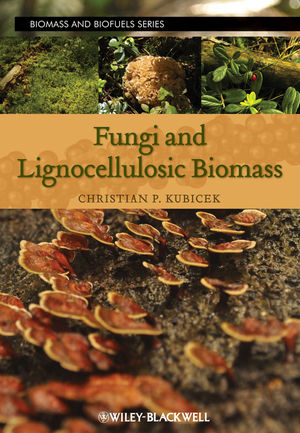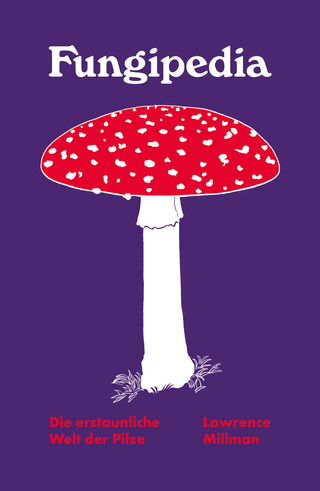
Fungi and Lignocellulosic Biomass
Wiley-Blackwell (Verlag)
978-0-470-96009-7 (ISBN)
Harnessing fungi’s enzymatic ability to break down lignocellulolytic biomass to produce ethanol more efficiently and cost-effectively has become a significant research and industrial interest. Fungi and Lignocellulosic Biomass provides readers with a broad range of information on the uses and untapped potential of fungi in the production of bio-based fuels.
With information on the molecular biological and genomic aspects of fungal degradation of plant cell walls to the industrial production and application of key fungal enzymes, chapters in the book cover topics such as enzymology of cellulose, hemicelluloses, and lignin degradation. Edited by a leading researcher in the field, Fungi and Lignocellulosic Biomass will be a valuable tool in advancing the development and production of biofuels and a comprehensive resource for fungal biologists, enzymologists, protein chemists, biofuels chemical engineers, and other research and industry professionals in the field of biomass research.
Christian P. Kubicek is a Professor at the Institute of Chemical Engineering at the Vienna University of Technology, is Head of the Institute’s Research Division of Biotechnology and Microbiology, has authored more than 300 refereed journal articles and more than 20 book chapters, and has served as an editor and editorial board member for several international peer reviewed journals.
Preface ix
1 The Plant Biomass 1
1.1 The Structure of Plant Cell Wall 1
1.2 Chemical and Physicochemical Properties of the Major Plant Cell Wall Constituents 3
1.2.1 Cellulose 3
1.2.2 Pectin 6
1.2.3 Hemicelluloses 8
1.2.4 Lignin 11
1.3 Abundant Sources of Carbohydrate Polymers and Their Monomer Composition 13
1.3.1 Agricultural Wastes 13
1.3.2 Forest Product Residues 14
1.3.3 Energy Crops 15
1.3.4 Weedy Lignocellulosic Substrates 15
1.4 Biosynthesis of Plant Cell Wall Polymers 16
1.4.1 Cellulose 16
1.4.2 Hemicellulose Biosynthesis 19
1.4.3 Pectin Biosynthesis 20
1.4.4 Lignin Biosynthesis 23
1.5 Strategies for Manipulating Wall Composition 26
1.5.1 Manipulation of Plant Cell Wall Polymer Composition 26
1.5.2 Manipulation of Plant Lignin Content 27
2 The Actors: Plant Biomass Degradation by Fungi 29
2.1 Ecological Perspectives 29
2.2 The Major Three Mechanisms of Lignocellulose Degradation by Fungi 30
2.2.1 White Rot 31
2.2.2 Brown Rot Fungi 35
2.2.3 Soft Rot Fungi 39
2.3 Plant Cell Wall Degradation by Plant Pathogenic Fungi 40
2.4 Anaerobic Fungi 41
3 The Tools—Part 1: Enzymology of Cellulose Degradation 45
3.1 General Properties and Classification of Enzymes That Hydrolyze Polysaccharides 45
3.2 Fungal Cellulolytic Enzymes 49
3.2.1 Cellulose-Binding Domains 52
3.2.2 Cellobiohydrolases (EC 3.2.1.91) 55
3.2.3 Endo--1,4-Glucanases (EC 3.2.1.4) 58
3.2.4 -1,4-Glucosidases 64
3.3 Nonenzymatic Proteins Involved in Cellulose Hydrolysis 65
3.3.1 GH61 Proteins 65
3.3.2 Swollenin 67
4 The Tools—Part 2: Enzymology of Hemicellulose Degradation 69
4.1 Xyloglucan Hydrolysis 69
4.2 Degradation of the Xylan Backbone 72
4.2.1 GH10 Xylanases 73
4.2.2 GH11 Xylanase 75
4.2.3 GH30 Glucuronoxylan Xylanohydrolases 76
4.2.4 GH3 -Xylosidases 76
4.2.5 GH43 -Xylosidases 77
4.2.6 GH54 -Xylosidases 78
4.3 Degradation of the Galactomannan Backbone 78
4.4 Degradation of Pectin 80
4.4.1 Hydrolytic Pectin Degradation 80
4.4.2 Pectin Degradation by -Elimination 82
4.5 Accessory Glycoside Hydrolases for Hemicelluloses Degradation 84
4.5.1 Enzymes that Act on Arabinose-Containing Substituents 85
4.5.2 Enzymes that Act on Galactose-Containing Substituents 86
4.5.3 -Xylosidases 89
4.5.4 -Fucosidases 90
4.5.5 -Glucuronidases and Glucuronan Lyases 90
4.5.6 Accessory Hydrolases for Pectin Degradation 91
4.6 Other Accessory Enzymes 92
4.6.1 Feruloyl and p-Coumaroyl Esterases 92
4.6.2 Acetyl- and Methylesterases 93
4.6.3 Pectin Esterases 95
4.6.4 Glucuronoyl Esterases 95
5 The Tools—Part 3: Enzymology of Lignin Degradation 99
5.1 Lignin Peroxidase 101
5.2 Manganese Peroxidase 105
5.3 Versatile Peroxidase 108
5.4 Dye-Oxidizing Peroxidase 109
5.5 Laccases 110
5.6 Enzymes Generating Hydrogen Peroxide 115
5.6.1 Glyoxal Oxidase 115
5.6.2 Other FAD-Dependent Oxidases 116
5.7 Cellobiose Dehydrogenase 116
5.8 Enzymes Essential for Oxalic Acid Formation 117
5.9 Glycopeptides 118
6 Catabolic Pathways of Soluble Degradation Products from Plant Biomass 119
6.1 Uptake of Mono- and Oligosaccharides 119
6.2 Metabolism of D-Glucose and D-Mannose 121
6.3 Catabolism of D-Galactose 122
6.4 Catabolism of Pentoses 125
6.5 Catabolism of Hexuronic Acids 127
7 Regulation of Formation of Plant Biomass-Degrading Enzymes in Fungi 129
7.1 The Cellulase Inducer Enigma 129
7.2 Inducers for Hemicellulases 133
7.3 Transcriptional Regulation of Cellulase and Hemicellulase Gene Expression 134
7.3.1 Activators of Cellulase and Hemicellulase Gene Expression 135
7.3.2 Specific Repressors of Cellulase and Hemicellulase Gene Expression 138
7.3.3 Wide Domain Regulators of Cellulase and Hemicellulase Gene Transcription 138
7.3.4 Regulation of Cellulase and Hemicellulase Transcription at the Level of Genome Accessability 144
7.3.5 Signal Transduction to Cellulase and Hemicellulase Gene Expression 145
7.4 Regulation of Ligninase Gene Expression 146
8 The Fungal Secretory Pathways and Their Relation to Lignocellulose Degradation 149
8.1 The Fungal Secretory Pathway 149
8.1.1 It Starts at the Endoplasmic Reticulum 149
8.1.2 Quality Control in the ER 152
8.1.3 Golgi Apparatus 154
8.1.4 The Plasma Membrane 156
8.1.5 Vacuoles 158
8.2 Protein Glycosylation 159
8.2.1 N-Glycosylation 159
8.2.2 O-Glycan Synthesis 161
8.3 Strategies for Improvement of the Fungal Secretory Pathway 161
8.3.1 Folding and UPR 163
8.3.2 Engineering of Protein Glycosylation 163
9 Production of Cellulases and Hemicellulases by Fungi 165
9.1 Fungal Producer Strains 165
9.1.1 Trichoderma Reesei 165
9.1.2 Other Fungal Producer Strains 167
9.1.3 Thermophilic Fungi 169
9.2 Strain Improvement 170
9.2.1 Strain Breeding by Classical Mutagenesis 170
9.2.2 Strain Improvement by Targeted Gene Manipulation 171
9.2.3 Strain Improvement by Complementation with Heterologous Enzymes 176
9.2.4 Strain Improvement by Protein Engineering 179
9.3 Cellulase Production 180
9.3.1 Cellulase Fermentation 180
9.3.2 Cellulase Downstream Processing 182
10 Production of Fermentable Sugars from Lignocelluloses 185
10.1 Pretreatment Technologies 186
10.1.1 Physical Pretreatment 186
10.1.2 Chemical Pretreatment 186
10.1.3 Physicothermal Pretreatment 189
10.1.4 Solvent Treatment 191
10.1.5 Biological Pretreatment 193
10.1.6 Summarizing Considerations on Pretreatment 195
10.2 Hydrolysis 195
10.2.1 Enzymatic Hydrolysis 195
10.2.2 Chemical Hydrolysis 200
11 Lignocellulose Biorefinery 201
11.1 Ethanol 202
11.1.1 Yeast Strain Improvement 203
11.1.2 Alternatives to S. cerevisiae as an Ethanol Producer 210
11.1.3 Process Improvement 212
11.2 n-Butanol 212
11.3 Advanced Biofuel Alcohols 213
11.3.1 Isobutanol 213
11.3.2 Syngas 214
11.3.3 Fuels from Isoprenoid and Fatty Acid Pathways 215
11.4 Lactic Acid 215
11.5 Succinic Acid 217
11.6 Xylitol 222
11.7 1,3-Propanediol 222
11.8 Polyhydroxyalkanoate 223
11.9 Other Products 223
11.10 Refinement by Chemical Processes 225
11.10.1 Furfural 225
11.10.2 Levulinic Acid 225
11.10.3 Uses of Lignin 225
11.10.4 Extraction of Chemicals from Lignocelluloses Biomass 226
Acknowledgments 229
References 231
Index 285
| Verlagsort | Hoboken |
|---|---|
| Sprache | englisch |
| Maße | 178 x 252 mm |
| Gewicht | 753 g |
| Themenwelt | Naturwissenschaften ► Biologie ► Mykologie |
| Technik ► Elektrotechnik / Energietechnik | |
| Weitere Fachgebiete ► Land- / Forstwirtschaft / Fischerei | |
| ISBN-10 | 0-470-96009-4 / 0470960094 |
| ISBN-13 | 978-0-470-96009-7 / 9780470960097 |
| Zustand | Neuware |
| Informationen gemäß Produktsicherheitsverordnung (GPSR) | |
| Haben Sie eine Frage zum Produkt? |
aus dem Bereich


